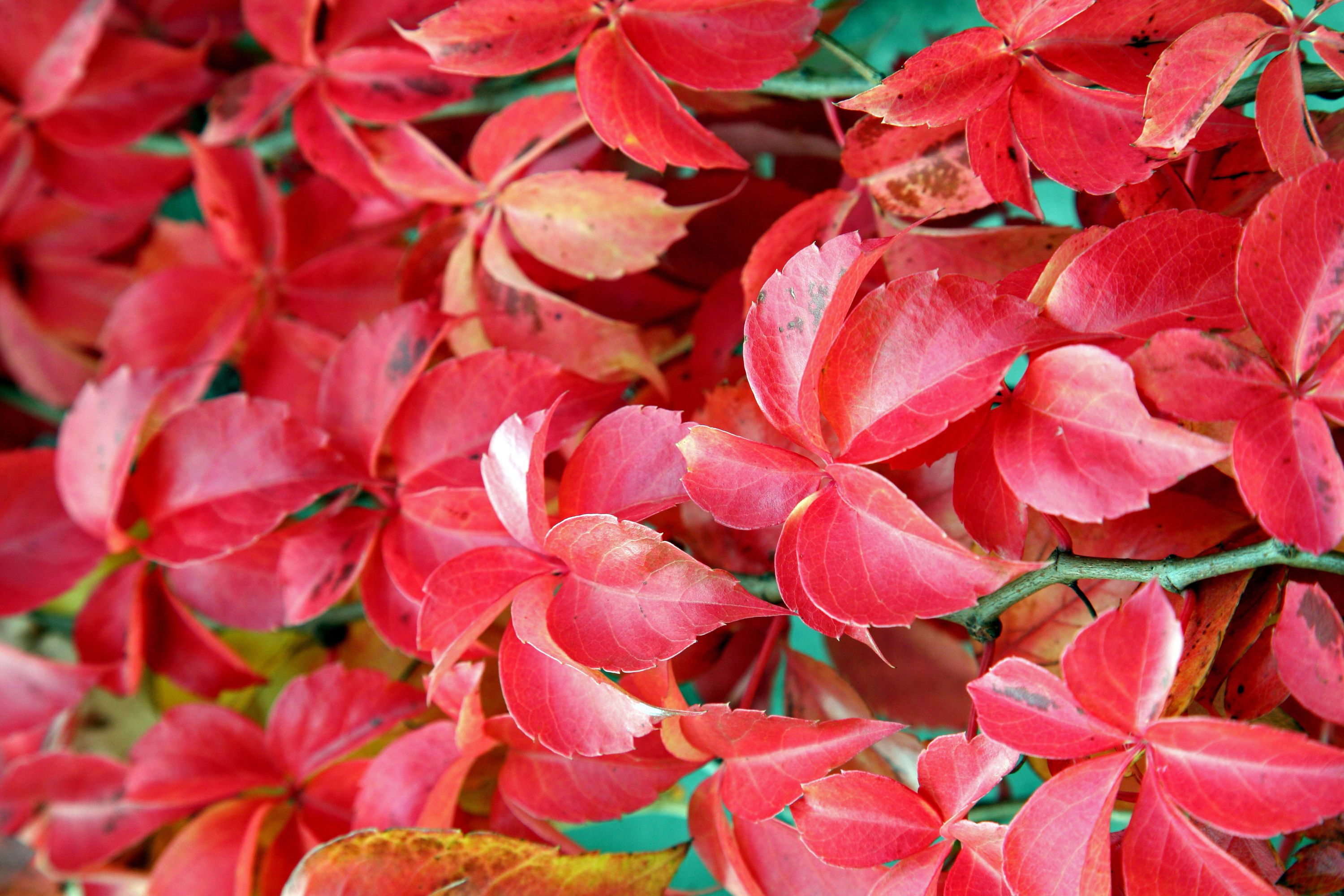Virginia creeper
(Parthenocissus quinquefolia)

Description
Parthenocissus quinquefolia is a plant species commonly known as Virginia creeper. It is a deciduous vine that belongs to the Vitaceae family and is native to eastern and central North America. The plant is popularly cultivated for its attractive foliage and the ease with which it climbs and covers walls, trellises, and fences. In this article, we will discuss the taxonomy, morphology, distribution, cultivation, and uses of Parthenocissus quinquefolia. Taxonomy The scientific name of Virginia creeper is Parthenocissus quinquefolia. The genus name Parthenocissus is derived from two Greek words "parthenos," meaning virgin, and "kissos," meaning ivy. The specific epithet "quinquefolia" means "five-leaved" in Latin and refers to the number of leaflets in each leaf. The plant is also known by several common names such as American ivy, five-leaved ivy, and woodbine. Morphology Parthenocissus quinquefolia is a deciduous vine that can grow up to 20 meters in height. The plant climbs by means of tendrils that emerge from the nodes of the stems. The leaves are compound and consist of five leaflets that are ovate or elliptical in shape. The leaflets are 3-20 cm long and 2-15 cm wide, with toothed margins. The foliage turns bright red in the fall, adding a vibrant color to the landscape. The flowers of Parthenocissus quinquefolia are small and inconspicuous, and are borne in clusters from May to July. The fruit is a small, blue-black berry that is 5-7 mm in diameter and is produced in the late summer and fall. Distribution Parthenocissus quinquefolia is native to eastern and central North America, ranging from Quebec and Ontario in the north to Florida in the south and as far west as Manitoba and Texas. The plant is commonly found growing in woodlands, thickets, and along roadsides. It is also a popular garden plant in many parts of the world due to its attractive foliage and ease of cultivation. Cultivation Parthenocissus quinquefolia is a hardy plant that can tolerate a wide range of growing conditions. It prefers well-drained soil that is rich in organic matter and full sun to partial shade. The plant can also grow in a variety of soil types, including sandy, loamy, and clay soils. It is relatively drought-tolerant but prefers moderate moisture. The plant can be propagated by seeds or cuttings. Seeds should be planted in the fall, and cuttings should be taken in the spring or fall. Virginia creeper can be grown as a ground cover or trained to climb walls, trellises, or fences. The plant can be pruned in the late winter or early spring to control its growth and shape. Uses Parthenocissus quinquefolia is primarily grown as an ornamental plant due to its attractive foliage and ease of cultivation. The plant is commonly used to cover walls, trellises, and fences, adding a vertical element to the landscape. It is also used as a ground cover in areas where erosion control is needed. The berries of Virginia creeper are eaten by birds and other wildlife, and the foliage provides shelter for many small animals. The plant has been used in traditional medicine to treat a variety of ailments, including fever, rheumatism, and dysentery. However, it should be noted that the plant can be toxic if ingested, and caution should be exercised when handling it. Conservation Status Parthenocissus quinquefolia, also known as Virginia creeper, is currently listed as a species of least concern by the International Union for Conservation of Nature (IUCN). This means that there are no major threats to the species' survival, and its population is considered to be stable. However, it is worth noting that like many other plant species, Virginia creeper may face threats from habitat loss, fragmentation, and degradation due to human activities such as urbanization, land development, and agriculture. Invasive species can also pose a threat to the plant's survival by outcompeting it for resources and altering its habitat. Therefore, it is important to monitor the population of Parthenocissus quinquefolia and its habitat to ensure its long-term survival. Conservation efforts such as habitat restoration, invasive species management, and the establishment of protected areas can also help to maintain the species' population and its ecological function in its native range.
Taxonomic tree:







